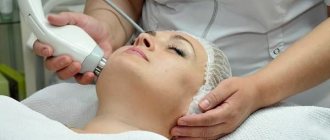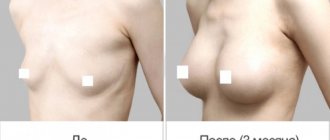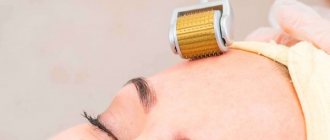- Blepharoplasty
- Seamless blepharoplasty
- Europeanization of the eyes
- Changing the shape and shape of the eyes
In our plastic surgery clinic, blepharoplasty is performed by highly qualified surgeons with more than 35 years of experience, who use only proven techniques in their work. The plastic surgery department of the Frau Klinik is equipped with modern high-tech surgical, anesthesiological, and rehabilitation equipment that meets the highest quality standards.
Blepharoplasty is an operation to correct the eyelids. The need for it usually arises as a result of skin aging, loss of firmness and elasticity. This leads to the growth of periorbital fatty tissue and subsequently to the formation of hernias in the eyelid area. Plastic surgery is also effective when the upper eyelid hangs over the eyeball or in the corners of the eyes.
Free annual maintenance and monitoring!
After surgery, we provide our patients with free annual care, monitoring and support from surgeons and clinic staff on all issues related to your plastic surgery.
| Fill out an application on the website, we will contact you as soon as possible and answer all your questions. | To get a consultation |
One of the common problems in women after 30 years of age is sagging eyelid skin, the so-called “bags under the eyes.”
Surgical intervention in the eye area requires high professionalism and experience from the doctor. Unwanted damage to soft tissue structures can lead to serious complications and an unaesthetic appearance. Our clinic employs highly qualified specialists with extensive practical experience in the field of plastic surgery. Modern equipment of the clinic and the use of proven drugs make the doctor’s work easier and speed up the recovery period.
Before and after
All photos
Upper and lower (circular) blepharoplasty and removal of painter's fat.
Leading plastic surgeon at Frau Klinik Oleg Badak on blepharoplasty
Causes and symptoms of ptosis
Upper eyelid ptosis or blepharoptosis can be expressed by the following symptoms:
- noticeably drooping upper eyelid;
- with bilateral lesions, sleepy facial expression;
- rapid fatigue of the visual organs during exercise (reading, working on a computer, watching TV, etc.);
- excessive lacrimation, discomfort, pain;
- discomfort when closing the eyelids;
The mechanics of development of the above-described symptoms directly depends on the tone, contractions and width of the palpebral fissure during the motor function of the upper eyelid.
Thus, the levator palpebral muscle controls its vertical position. The orbicularis muscle allows you to close the eye. And the frontalis muscle provides compression and contraction of the eyelid when looking up.
Tone and contraction occur under the influence of nerve impulses that arrive to the frontal and circular muscles from the facial nerve, equipped with a nucleus located in the stem section on the corresponding side of the brain.
The muscle that raises the upper eyelid is innervated by a group of neurons - the left and right bundles of the caudal nucleus of the oculomotor nerve, which is also located in the brain.
Rehabilitation period and doctor’s recommendations
The rehabilitation period is kept to a minimum; in the first three days, the patient may notice the appearance of symptoms such as:
- Swelling of the eyelids.
- Bruises under the eyes.
- Hematomas.
- Slight pain.
On this topic
- Blepharoplasty
Correcting Asian eyes with blepharoplasty
- Editorial board of Plasticology.ru
- July 8, 2021
Swelling goes away after 3-4 days, the maximum recovery period lasts no more than 7-10 days. At this time, you need to monitor your health and follow the recommendations of a specialist:
- apply cool compresses to the eyes;
- patches for 3 days to reduce swelling and bruising;
- do not use decorative cosmetics for 7 days;
- do not sit at the computer, do not read books and do not strain your eyes;
- stop eating salty foods;
- do not wear contact lenses for 3–4 weeks;
- do not go to the solarium, sauna or steam bath;
- do not take a hot shower or bath;
- Protect your eyes from ultraviolet rays with sunglasses .
After surgery, glasses must be worn for at least 3 months, no less. They can be removed indoors, but not outdoors.
It is also not recommended to exercise vigorously or bend over frequently. This may lead to undesirable consequences.
If after surgery the patient is bothered by discomfort in the eyes, a feeling of dryness, or decreased visual acuity, it is necessary to notify the doctor about this. He will help you get rid of unpleasant symptoms and prescribe eye drops or other remedies.
Types of Upper Eyelid Ptosis
Ophthalmologists divide ptosis according to the type of localization into unilateral (occurs in 70% of cases) and bilateral. Also, such a disease of the upper eyelid can be true and false. The second type may be associated with the presence of excess eyelid skin and subcutaneous tissue, endocrine pathology of the visual organs, eyelid hernia, loss of elasticity of the eyeballs, and strabismus.
In addition, a distinction is made between pathological and physiological drooping of the upper eyelids. The first occurs in connection with mechanical injuries, inflammatory processes of motor muscles, eyeballs or brain membranes, as well as anomalies at various levels (hemispheric, supranuclear, nuclear) in the nervous system after heart attacks and brain tumors, damage to the brachial plexus and others.
Physiological drooping of the upper eyelids can be associated with the sympathetic system, retina, hypothalamus, occipital and temporal cortex. Then the muscle tone and width of the palpebral fissure will depend on the emotional state of the person - fatigue, reaction to pain, surprise, anger and others. In this case, eyelid ptosis is short-lived.
According to the degree of the pathological condition in practice, ptosis of the upper eyelid is:
- partial - the upper eyelid covers only 1/3 of the pupil;
- incomplete - the eyelid covers 2/3 of the pupil;
- full - the eyelid completely covers the pupil.
Due to development, pathology is divided into congenital and acquired.
Can there be complications after upper blepharoplasty?
Blepharoplasty is one of the safest operations on the face, since it does not affect the eyeball at all - the effect is only on the skin and subcutaneous fat layer of the eyelid.
But this safety and naturalness of the result are possible only if the operation is performed by an experienced surgeon who in no case tightens the skin or excises excess.
A negative result can most likely be considered not as complications, but as an incorrect calculation, that is, the result of an operation when more skin is cut off than necessary.
Then the eyeball turns out to be open - hence the effect of bulging “owl” eyes (when the eyelid does not close the white of the eyelid well and the shape of the eye becomes round), when the shape of the eyes changes the entire face for the worse.
Congenital blepharoptosis
The congenital form of the disease is less common in ophthalmological practice than the acquired form. Its reasons may be:
- Marcus syndrome is a drooping eyelid that is relieved by opening the mouth, chewing, yawning, or shifting the lower jaw to the opposite side. This is a syndrome with disruption of the nucleus of the oculomotor and trigeminal nerves.
- Congenital myasthenia or pathology of the levator innervation.
- Horner's syndrome is ptosis with accompanying constriction of the pupil, a more significant deepening of the eyeball, and dilation of the conjunctival vessels.
- Neural etiology with congenital paresis of the third pair of cranial nerves.
- Duane's syndrome is a rare congenital form of strabismus with a lack of motor ability of the eye to move outward.
- Isolated ptosis of the upper eyelid is caused by abnormal development or complete absence of development of the levator or its tendon. This congenital form of the disease is most often hereditary and, as a rule, is bilateral.
Acquired ptosis
Acquired ptosis or drooping of the upper eyelid is often unilateral. The disease occurs due to levator paresis or palsy. This may be a consequence of mechanical damage, tumors, age-related changes in the body, or diseases such as herpes zoster, stroke and others.
The most common forms of acquired eyelid drooping include:
- Myogenic - manifests itself in muscular dystrophy, myasthenia gravis, blepharophimosis, or is a consequence of ocular myopathy.
- Aponeurotic - most often associated with dystrophic age-related changes and weakness of the muscle aponeurosis. Less often it becomes a consequence of mechanical damage and trauma, and is treated with corticosteroid-type drugs.
- Neurogenic - the result of abnormal innervation of the oculomotor nerve in Horner's syndrome, aplasia syndrome, paresis, ophthalmic migraine, diabetic neuropathy or stroke.
- Mechanical - can be caused by severe swelling, inflammatory processes, isolated levator pathology, abnormal changes in the orbit (tumor, damage to the anterior orbital region, etc.), unilateral facial dystrophy after a stroke.
Blepharoplasty: indications and contraindications
It is important to understand that blepharoplasty is a surgical intervention, usually of a cosmetic type, but it can also be of a therapeutic nature. The operation is performed to change the shape of the eyelid, helps eliminate its overhang, and relieves the patient of ptosis.
Experts identify the following indications, in addition to the overhanging upper eyelid, for blepharoplasty:
- the patient has large bags under the lower eyelids;
- severe form of blepharoptosis, in which a person experiences discomfort;
- the appearance of severe dark circles under the eyes (it is important to remember that this symptom is characteristic of many diseases, so you first need to establish the cause of its occurrence);
- wrinkles at the outer edges of the eyes.
Before the operation is performed, the doctor identifies the causes of ptosis. For example, the congenital form of the pathology looks symmetrical, and its cause is abnormal muscle development. Therefore, as a consequence, “lazy eye” syndrome appears. If blepharoptosis of the upper eyelid is acquired, it is usually the result of a muscle strain, injury or nerve disease.
Contraindications in the presence of which blepharoplasty should not be performed include:
- pronounced pigmentation of the skin in the area around the eyes;
- tattooing in the eyelash area;
- systemic diseases during the period of decompensation;
- acute forms of inflammatory diseases of any origin;
- menstrual period in women.
Types of blepharoplasty: how to choose?
For a patient with a problem with a drooping upper eyelid, a specialist can offer several surgical options. The choice of method for carrying out the procedure will depend on the physiological characteristics of the person, the degree of impact of the pathology on the visual organs and the nature of its origin.
The following types of blepharoplasty are distinguished:
- Traditional upper eyelid surgery - the surgeon removes a little fat layer through a micro-incision, and then sagging skin. Subsequently, the skin is fixed with anatomical “anchors”.
- Laser correction - using a laser beam, a specialist makes several miniature incisions and removes not only hernias, but also existing fat deposits. The peculiarity of this type of blepharoplasty is minimal trauma.
- Transconjunctival intervention is a sutureless technique that is indicated for patients with slight drooping of the upper eyelid and congenital type of ptosis. That is, in the case when the regenerative abilities of the patient’s body are normal.
- Injection blepharoplasty - by injecting special substances that help get rid of drooping upper eyelids and dark circles under the eyes.
It is important to understand that the choice of type of operation is made individually after examining the patient.
How to get flawlessly youthful eyes for 10 years or more
You are probably considering blepharoplasty. Choose a surgeon and clinic.
You've probably already read that eye rejuvenation usually involves removing excess skin in the upper and lower eyelids, as well as fatty hernias that give the effect of bags under the eyes.
You have already been promised that a youthful look will delight you for 7-10 years...
Unfortunately, this is false information.
Firstly , in a smoking and nervous metropolis, the result of classical eyelid surgery lasts no more than 5.
Secondly , few people know that the technique of performing classical blepharoplasty was finally formed by 1950 and has undergone virtually no changes since then!
Preparing for surgery
Before starting the procedure, the specialist conducts a comprehensive examination of the patient. It is important for the doctor to know whether he has had chronic pathologies, whether there are diseases in the active stage, whether surgical interventions have been performed previously, what is the plasticity of the skin and the depth of wrinkles, and whether there are allergies to specific medications.
In addition, a patient with a drooping upper eyelid must undergo a number of instrumental and laboratory tests, including an ECG, general urine and blood tests, blood biochemistry, and a clotting test.
Most often, blepharoplasty is performed under local anesthesia, since general anesthesia is a serious stress for the body.
If the operation is complex, not only on the upper but also on the lower eyelid, the patient is offered general anesthesia. Because this type of procedure is more traumatic.
What else is important in the preoperative period:
- If you are taking blood thinners, stop taking them two weeks before your procedure.
- A few days before surgery, it is better to avoid alcohol, fatty and spicy foods. To speed up recovery, it is recommended not to smoke during this period and at least for several days after eyelid surgery.
- Before the operation, you should not sunbathe - neither on the beach nor in the solarium. It is advisable to avoid prolonged exposure to the sun for 14 days before the intervention.
- If the surgeon has prescribed you to take any medications, do not neglect these recommendations.
Blepharoplasty: stages
Upper eyelid correction surgery includes several stages:
- applying markings to the eyelid using a marker;
- applying a plate to the visual organs to protect against injury;
- an incision in the eyelid in the area designated by markings;
- moving the skin of the eyelid to the side to remove the fat layer;
- removal of excess skin;
- suturing;
- treatment with an anesthetic anti-inflammatory solution and application of a cold bandage.
Will your face change after blepharoplasty?
All manipulations performed during blepharoplasty do not change the facial expression in any way, they simply give facial expressions greater lightness and freedom, rejuvenate and refresh the face.
According to our patients, most friends and acquaintances, meeting them after eyelid surgery, say that they look very good, completely unaware of the fact of the operation.
An experienced plastic surgeon, excising excess skin, opens the eye in such a way that the look is natural, the eyeball is not exposed, and the eyelids close naturally.
Rehabilitation
Healing of the eyelid after blepharoplasty proceeds without serious consequences if all the doctor’s recommendations are followed. Necessary:
- observing the prescribed regularity, take anti-inflammatory and painkillers;
- apply cold compresses;
- exclude physical activity;
- apply a special softening ointment to the postoperative suture;
- stop using a smartphone, working on a computer, and watching TV for at least 10 days.
If you adhere to the rules described above, you can minimize the risk of complications and speed up the rehabilitation process.
If blepharoplasty uses suture material that does not dissolve on its own, then, as a rule, the patient needs to visit a specialist 5-7 after the operation to remove the threads.
Complications
Mild lagophthalmos and keratitis (dry eye) are probably the most common complications after surgery and are usually easy to treat. Treatment for this problem includes the use of artificial tear supplements during the day and ointment at bedtime for a short period after surgery.
In addition, oral doxycycline may be useful in correcting meibomian gland dysfunction, which may contribute to dry eyes after surgery.
In rare cases, corneal abrasion or ulceration may develop, requiring temporary closure of the eyelids using a tarsorrhaphy procedure.











